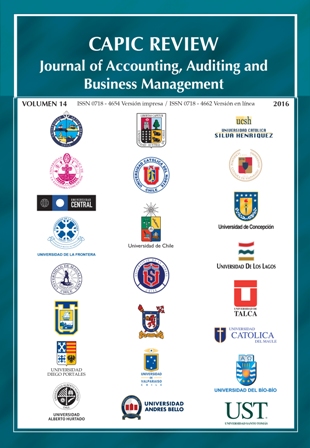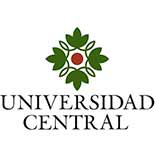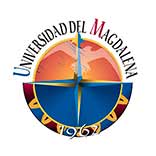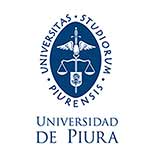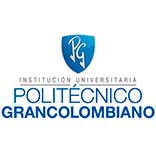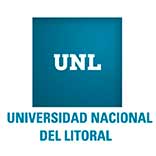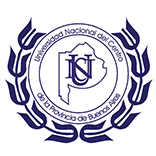Analysis of interactive learning for accounting students in career of business administration
Published 2016-12-10
Keywords
- Accounting,
- interactive learning,
- teaching
How to Cite
Abstract
The technologies of information and communication were introduced years ago and they have gradually revolutionized business systems and they have also reached educational environments, creating a new model of teaching and learning, because they involved changes at the processes, objectives, content and infrastructure of educational institutions that are adapting to the current needs of companies.
This article aims accounting teachers of the Business Administration career to have actions that allow their students to encourage the study of the subject. This required to research and to reflect in causes of the high failure rates of students and thus to approach the problem with appropriate methodologies.
The methodology used in this article was mixed. The quantitative study was carried out with the application of a survey directed to the students who attended the subjects of Accounting 1 and 2 of the career of Business Administration during the period 47. The qualitative study was carried out with the application of In-depth interviews directed to the teachers of accounting subjects. In both cases the objectives aimed to determine the need for tactics involving the use of new technologies and interactive learning.
The results confirm the need to apply interactive learning strategies, which include virtual tutorials, the creation of video tutorials and the use of interactive tools in virtual environments. This is intended to raise motivation of students and decrease failure rates currently evidenced in the career.
Downloads
References
2. Bayonès, M. (2010). La articulación en Contabilidad y las tecnologías de información y comunicación (tic). En búsqueda del aprendizaje significativo. Ciencias económicas, 47-61.
3. Benvenuto, A. (2003). Las tecnologías de información y comunicaciones (TIC) en la docencia universitaria. Theoría, 109-118.
4. Cacheiro, M. (2011). Recursos educativos TIC de información, colaboración y aprendizaje. Revista de Medios y Educación, 69-81.
5. Cebián, M. (2003). Enseñanza Virtual para la Innovación Universitaria. Madrid: S.A. de Ediciones.
6. Dorfsman, M. (2015). La profesión docente en contextos de cambio: el docente global en la sociedad de la información. Revista de Educación a Distancia – Docencia Universitaria en la Sociedad del Conocimiento, 1-23.
7. Dussel, I., & Quevedo, L. (2011). Educación y nuevas tecnologías: los desafíos pedagógicos ante el mundo digital. Buenos Aires: Fundación Santillana.
8. Gallardo, E. (2012). Hablemos de estudiantes digitales y no de nativos digitales. UT. Revista de Ciències de l’Educació, 7-21.
9. Giner, F. (2004). Los sistemas de información en la sociedad del conocimiento. Madrid: ESIC Editorial.
10. Iglesias, M., & Iglesias, P. (2016). La innovación evaluativa y el cambio de paradigma en la enseñanza contable. Revista Retos (12), 165-178.
11. Malagón, A. (2006). ¿Qué pueden aportar las tecnologías de la información y de la comunicación al campo educativo? Revista EAN, 185-200.
12. Marqués, P. (2012). Impacto de las TIC en la educación: funciones y limitaciones. Revista de investigación 3 Ciencias, 1-15.
13. Mas Torelló, O. (2011). El profesor universitario: Competencias y formación. Profesorado. Revista de currículum y formación del profesorado, 195-211.
14. Medina, A. (2009). Metodología didáctica para el desarrollo de planes de estudio en el EEES. En A. Medina, M. Sevillano, & S. De la Torre, Una universidad para el s. XXI. Espacio Europeo de Educación Superior (EEES) (págs. 195-212). Madrid: Universitas.
15. Ministerio de Educación del Ecuador. (2016). Reglamento a la LOEI. Quito: Dirección Nacional de Normativa Jurídico Educativa.
16. Moreno, M., & Quiñonez, D. (2009). La perspectiva didáctica de la estimulación motivacional en el proceso de enseñanza-aprendizaje. Revista Iberoamericana de Educación, 1-12.
17. Salinas, J., De Benito, B., & Lizana, A. (2014). Competencias docentes para los nuevos escenarios de aprendizaje. Revista Interuniversitaria de Formación del Profesorado, 145-163.
18. Sardelich, M. (2006). Las nuevas tecnologías en educación: Aplicación e integración de las nuevas tecnologías en el desarrollo curricular. Madrid: Editorial Vigo.
19. Severín, E. (Febrero de 2010). Tecnologías de la información y la comunicación (TICs) en educación. Banco Interamericano de Desarrollo, División Educación, Notas técnicas # 6, 2-39. Washington: BID.
20. Suárez, C., & Gros, B. (2013). Aprender en red: de la interacción a la colaboración. Barcelona: Editorial UOC.

